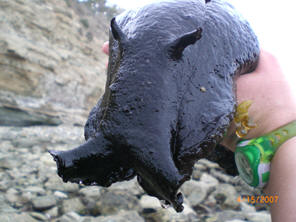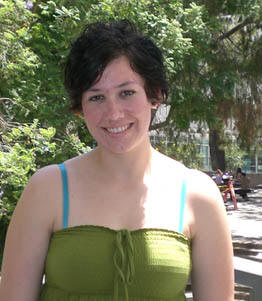

These sea hares get big!


Phylogeography of the genus Ostrea in the Gulf of California
I am researching the phylogeography of oyster species of the genus Ostrea with the Gulf of California. Throughout the years, morphological features have been used to identify oyster species. This can be extremely problematic because oysters are very phenotypically plastic. This has led to confusion among scientists about the taxonomy of major groups, such as the family Ostreidae. For example, a local species, the Olympia oyster, Ostrea lurida, was synonymized with its southern congener, Ostrea conchaphila back in the 1980's based upon morphological features. A more recent using molecular techniques by Maria Polson, a former graduate student in the Zacherl lab, provided evidence that they are, in fact, separate species. For my research, I am following up on Polson's work by searching for a zone of hybridization between these two species. I am also particularly interested in determining which Ostrea species are actually present within the Gulf of California. Using molecular techniques, I will be determining the taxonomic relationships between the various species present. Overall, this research aims to shed light on the phylogeny of the family Ostreidae, while completing a survey for Ostrea species in the Gulf of California.

Meredith Raith
Feeding Preferences of the Marine Gastropod Aplysia vaccaria
As and undergraduate in the Zacherl lab, I looked at the feeding preferences of the marine gastropod Aplysia vaccaria, more commonly known as the black sea hare. Little research has been done on this organism and its ecology is little known. To test feeding preferences animals were collected from the field and brought into lab where they were used in paired-choice feeding trials with the algal species Macrocystis pyrifera, Egregia menziesii, Plocamium cartilagineum and Ulva lobata. A. vaccaria would not feed on P. cartilagineum but would feed on all other species used and did not show a preference among the three species eaten.


